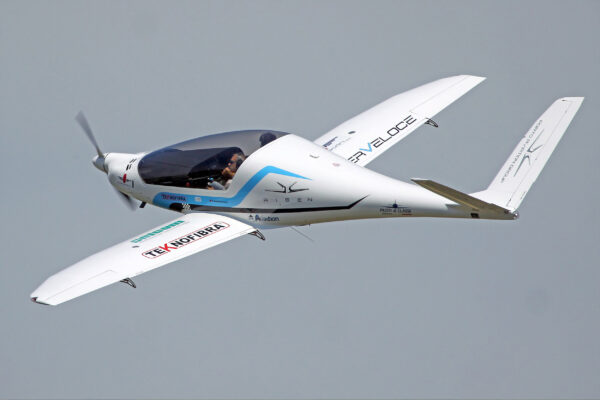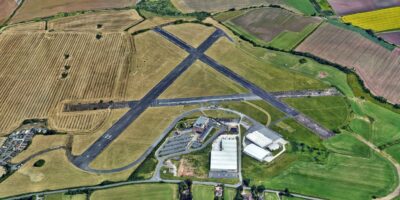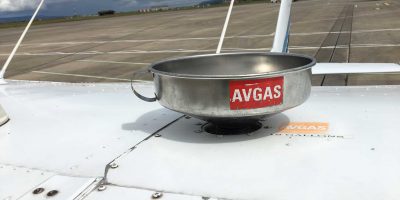Amphibious floats are heavy, draggy, and costly – but they can be a blessing, even when you’re not using them to take off or land on water. I recently completed a marathon journey in an amphibious Piper PA-18 Super Cub that stretched from Key West in Florida, to Bangor, Maine, and then on to Minnesota. The 2,000nm trip involved relatively few water landings using the aeroplane’s Wipline 2100 amphibious floats, but I was glad to have them because they allowed for a far more interesting, scenic, and smooth route than I otherwise would have taken.
Leaving the Florida Keys, my pax and I skimmed the waves to the everglades, then overflew Lake Okeechobee at low altitude on our way to the Atlantic. Seeing dolphins, seabirds, fish, and lobster traps wouldn’t have been possible from thousands of feet above.
Over the South Carolina and Georgia coasts, we avoided headwinds and bumps by flying at low altitude for hours as we made our way up the East Coast.
These amphibious floats add about 330lb to the Super Cub’s empty weight – and that’s significant for a roughly 1,400lb aeroplane.
The aeroplane pays a price for the additional weight in terms of take-off and landing distances, and its rate of climb and service ceiling are sharply reduced. A 160hp Super Cub on wheels climbs like a mountain goat to a maximum altitude of 18,000ft, but with amphibious floats it takes a major effort to reach 8,000ft. Somewhat surprisingly, however, the Cub’s cruise speed is about 85kt, about 7-8kt less than the wheeled version.
“Floats mean you can safely fly places you wouldn’t otherwise go”
Floats mean you can safely fly places you wouldn’t otherwise go. Seeing the New Hampshire and Maine coasts at nearly eye level, for example, was a rare and invigorating experience, and it allowed us to avoid the heat and constant turbulence that had rocked the aeroplane over land.
The floats also contain internal lockers that allow for carrying bulky bags that don’t easily fit into the Super Cub’s fuselage, and stowing equipment in the floats has the benefit of lowering the tall aeroplane’s centre of gravity. (Items stored in the floats can get wet during water landings, so keep electronics and undies elsewhere.)
After Maine, the floats turned into even more of a blessing. I was alone on this portion of the trip, and a soul-crushing headwind pushed ground speeds well below 60kt over the Adirondack Mountains of New York, and sharp jolts of turbulence made for a miserable ride. Over the south shore of Lake Ontario, however, cool and uniform water temperatures brought smooth air, and dropping down to 100ft or so above the surface eliminated much of the headwind. Ground speed increased about 20%, and the sights and sounds were novel and exhilarating.
After refuelling in Buffalo, New York, the summer heat and humidity created numerous – and powerful – thunderstorms along the south shore of Lake Erie. My planned route by Cleveland, Ohio, was blocked and would remain that way for the next couple of days. But the north side of the lake – the Canada side – was wide open with visual conditions. I filed a VFR flight plan (a requirement to pass through Canada) and was soon on my way across a 200-mile stretch of Canadian airspace.
Once over the water, conditions improved and ground speed increased, just as they had over Lake Ontario. I stayed about one mile off shore for most of the next two hours and well below gliding distance to shore. But who cares about gliding distance to shore in a floatplane? Wave heights were well under the Super Cub’s limit of two feet, and I had a paddle.
I crossed the southern end of Lake Huron at relatively high altitude, about 4,500ft, just because it made me feel better to make sure I was radar identified and talking to an air traffic controller when re-entering US airspace. Then I dropped back down to avoid the worst of the headwind the rest of the way across the state of Michigan.
Lake Michigan was my last water obstacle on my way to Minnesota, and unlike the other great lakes in which my path was mostly parallel to the shoreline, this time I would cross in the middle. At 75nm from just north of Muskegon, Michigan, to Green Bay, Wisconsin, the crossing would put the Super Cub over water for about one hour. Low clouds and fog blanketed western Michigan, but the air – and, more importantly, the surface of the lake itself – was glassy smooth. If a forced landing became necessary, the floats could handle it easily.
I was wary of this lake crossing. Once before I’d been fooled by glassy conditions and light winds on one side of the lake only to be confronted with rough water and high winds from the mid-point onward. This time, however, the water surface was remarkably placid throughout my transit.
Amphibious floats can be hard, perhaps impossible, to justify in economic terms. They reduce an aircraft’s speed, range, and ceiling. They’re expensive. And, if all that’s not enough, they also raise insurance rates. But the ability to fly on and off the water opens up so many possibilities for adventure travel. And having floats can turn even mundane ferry flights into memorable and rewarding explorations.
RV-4 pilot, ATP/CFII, specialising in tailwheel and aerobatic instruction in the USA
[email protected]







